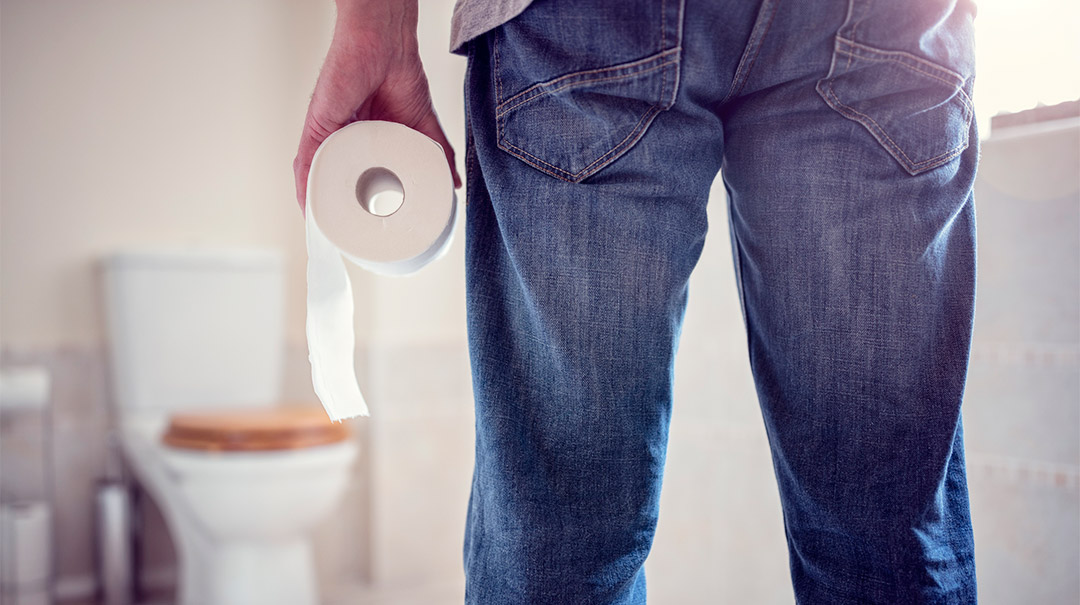Serious issues often mistaken for hemorrhoids.
Anytime there’s bleeding from the gastrointestinal (GI) tract, which includes the anus and rectum, that’s concerning to me as a gastroenterologist. If a patient comes in and reports this kind of bleeding, we have to think about the much more serious issues that also can cause bleeding in this area, such as:
- Abnormal blood vessels in the colon. These are present from birth in most people who have them.
- Anal fissures, which are small tears in the tissue of the anus that also can cause bleeding.
- Colon polyps or even colorectal cancer. Bloody stools and constipation are a few of the symptoms associated with colorectal cancer, so they’re not signs we can afford to take lightly.
- Diverticulosis, which causes areas of the colon’s lining to weaken and form small pouches. These pouches can erode over time and cause bleeding, which appears during bowel movements.
Patients who come to see me for rectal bleeding or pain need a thorough examination, which includes us discussing how long their symptoms have been going on and whether additional concerns have developed. For example, long-term bleeding can cause anemia, a shortage of red blood cells. Our blood tests can tell us approximately how long this process has been going on, which often is longer than patients have noticed the symptoms. The length of time can give us a clue as to whether it’s a case of hemorrhoids or something potentially more serious, and it can let us know if we need to do more testing.
Hemorrhoids treatment and reducing your risk.
The first step, however, is talking to your primary care or family doctor about these symptoms. Most of the time, they’re signs of hemorrhoids, which a primary care doctor usually can treat successfully. If you have hemorrhoids, you likely don’t need to see a specialist like me at first.
The connective tissue that keeps hemorrhoids in their place can get thinned out for many reasons. Straining to have a bowel movement is a common cause. Constipation, which we define as having three or fewer bowel movements in a week, is another frequent trigger for hemorrhoids. The way toilets are built also can contribute to the problem. The bowl of a toilet doesn’t support your bottom the same way a chair does. When you sit on a toilet, the perineum—the area between the thighs where the anus and rectum connect—can drop an inch or two into the bowl area while you have a bowel movement. That strains the connective tissue and can lead to symptomatic hemorrhoids over time.
Of course, diet also plays a role in developing the symptoms of hemorrhoids. Not getting enough fiber in your diet can make the stool in your colon bulkier and drier, which increases the chances of becoming constipated. If you’re not drinking enough water, your colon will pull more out of the food you eat, which leads to the same problem.
Controlling your hemorrhoids symptoms usually focuses on addressing the causes of constipation. Your doctor likely will recommend that you increase the amount of fiber in your diet. Vegetables and fruits, particularly fruits with peels, are a great way to increase the amount of fiber you eat. Foods with bran and oats, such as bran cereal or oatmeal, also pack on the fiber. If dietary changes aren’t enough, or for people who aren’t ready to change their diets, over-the-counter fiber supplements like Benefiber or Metamucil can help.
You’ll also need to make sure you’re getting enough fluid each day. Adults should drink 48 to 64 ounces of fluid per day. Among its many other benefits, getting enough fluid makes the stool softer and less painful to pass.

